Coming to Tra Vinh, walking through endless rice fields and intricate canals, we had the chance to visit and explore Samrong Ek Pagoda, one of the Khmer Theravada Buddhist pagodas that showcases the prominent cultural beauty of the locality.
Initially, our planned destination was Ba Om Pond, a square pond surrounded by green trees all year round, attracting visitors from near and far. However, by the time we arrived, both the scenery and the weather had shifted past their usual poetic appearance. After quickly taking a few photos, we hurried away, hoping to avoid the approaching rain.
As if nature was teasing us, the once gray sky suddenly turned clear blue, sharpening the scenery before our eyes. That’s when we suddenly saw Samrong Ek, a Khmer Theravada Buddhist Pagoda.
Unexpectedly, we had the good fortune to visit and explore Samrong Ek Pagoda.
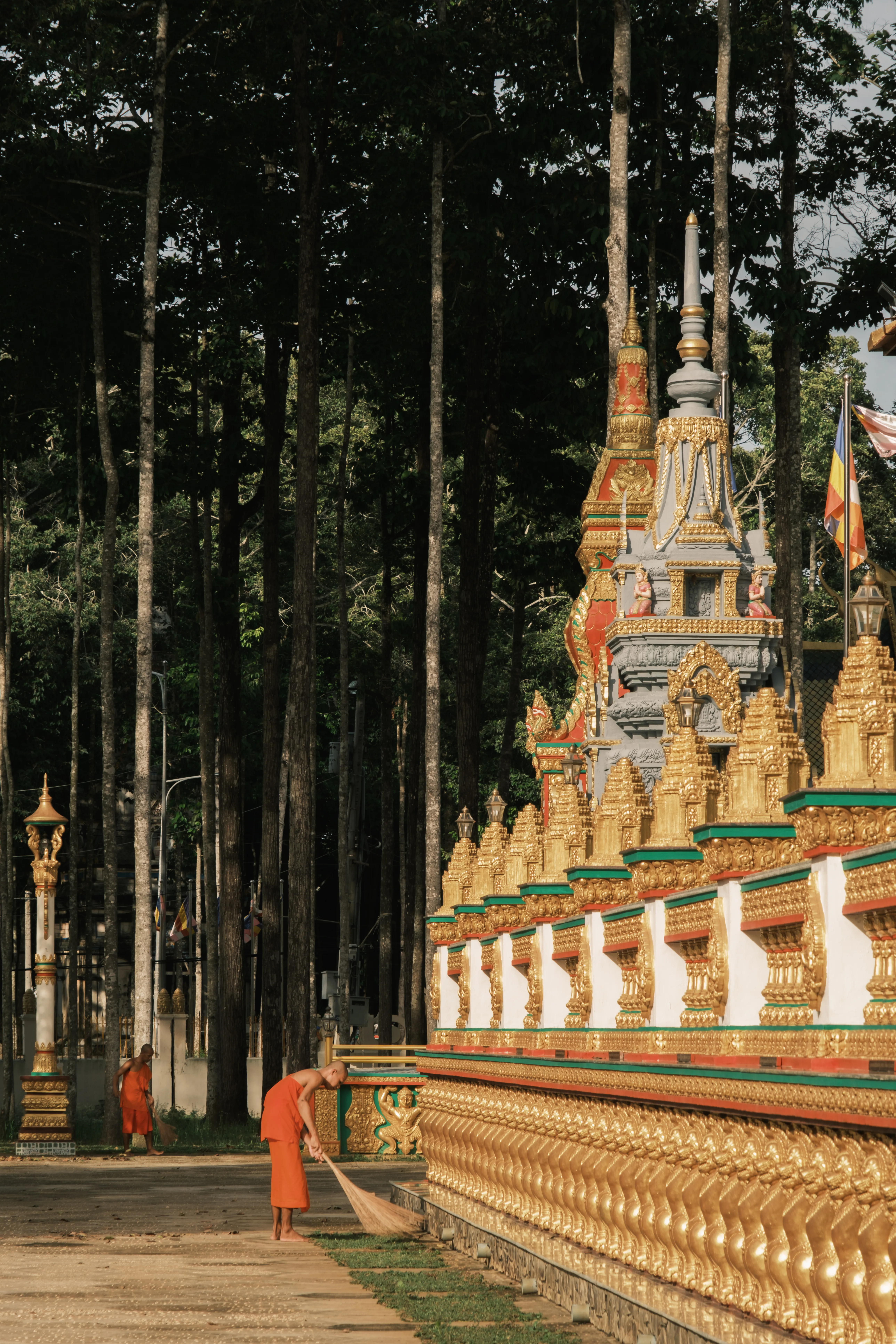
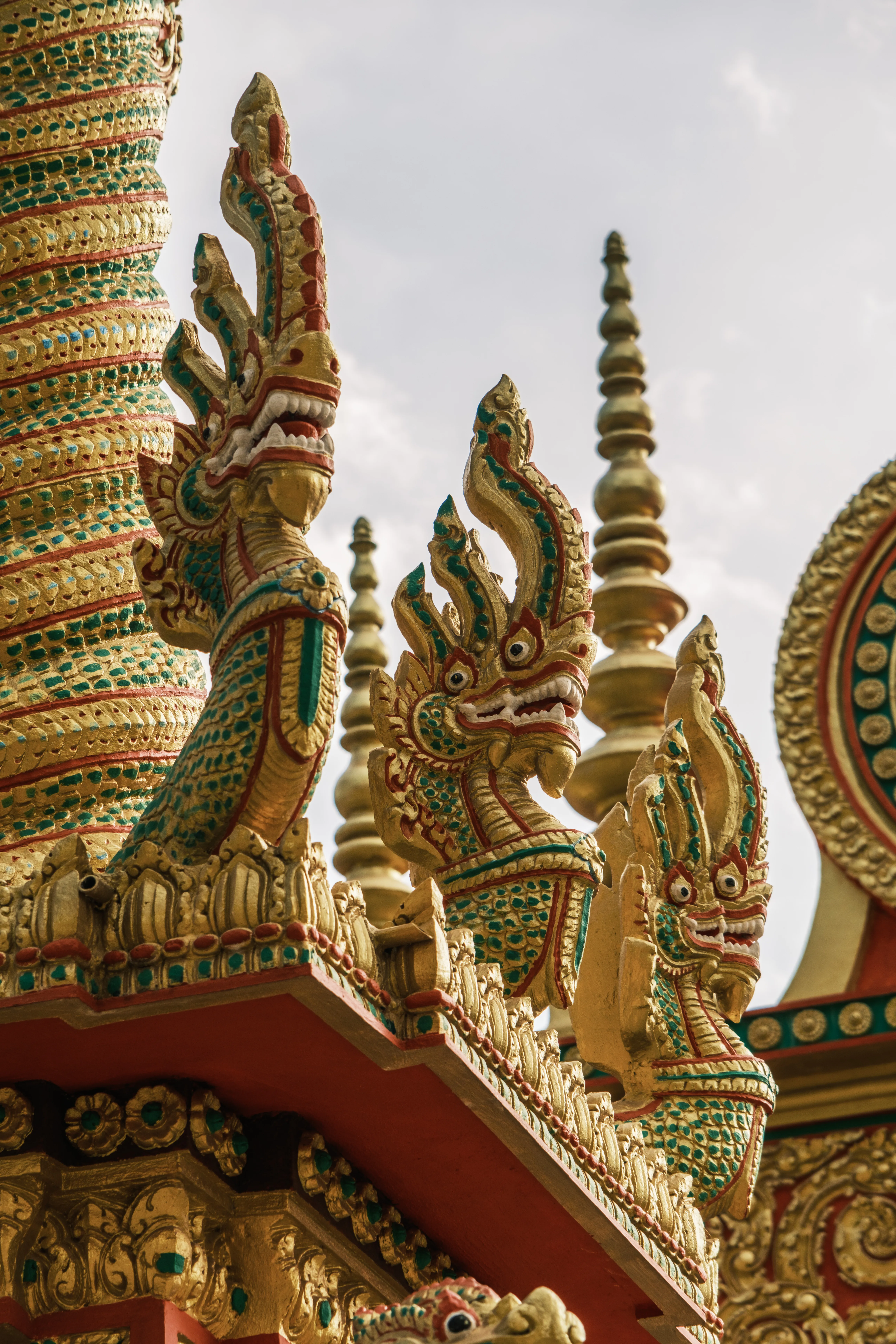
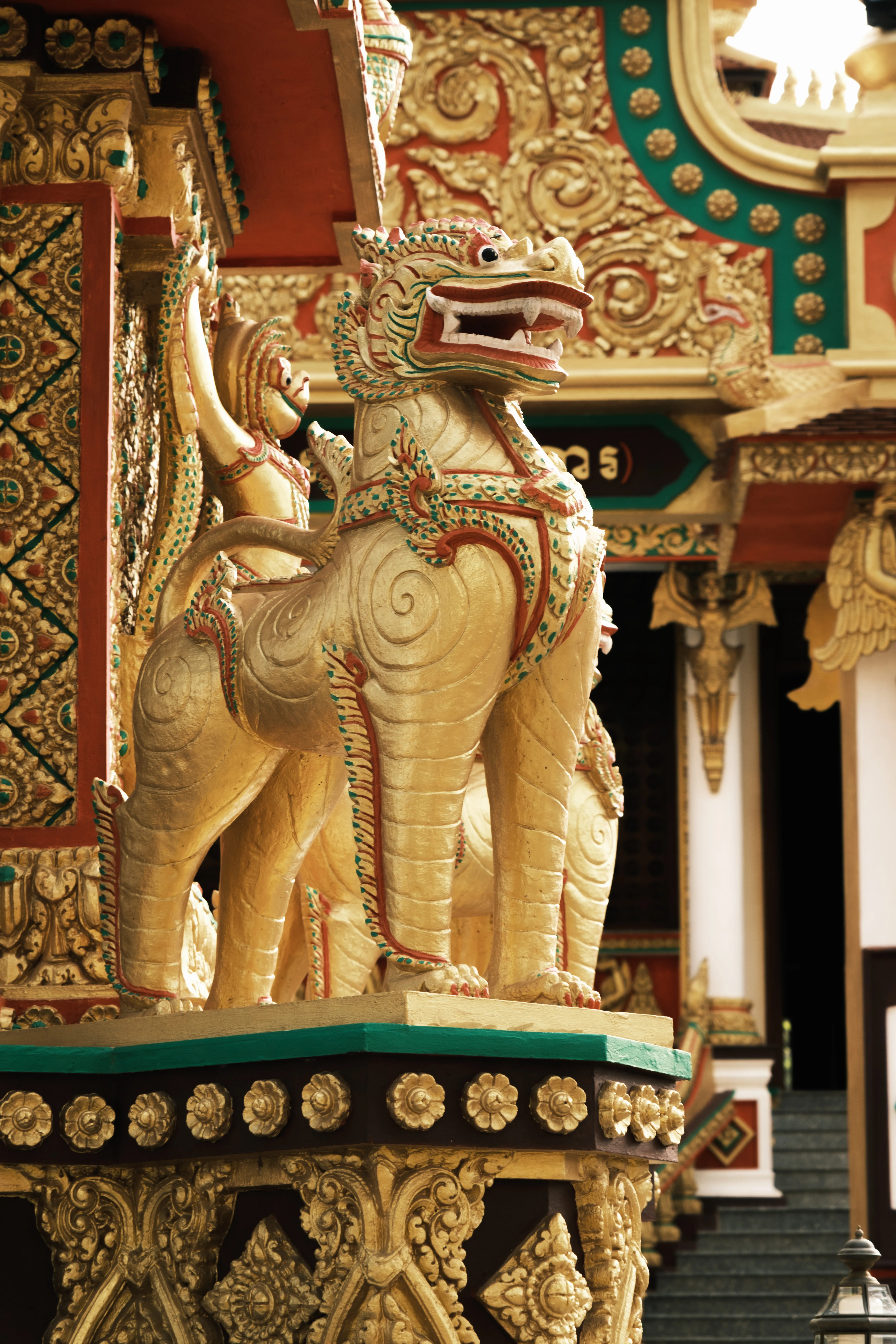
Unique Geographical Location
Located near the Toan Dan Chien Thang Monument roundabout, Samrong Ek Pagoda covers an area of 4 hectares, preserving many distinctive architectural features of Khmer Buddhist pagodas.
In Khmer, Samrong Ek means “the lonely sam rong tree.” This unique name stems from the fact that many sam rong trees* used to grow on the temple grounds. Among them was one large sam rong tree standing apart from the others. Over time, the locals began calling the pagoda “Samrong Ek” - the lonely sam rong tree.
*Sam rong tree: A significant tree in Khmer culture, commonly found around Khmer pagodas in southern Vietnam, known for its large canopy and massive trunk, often hundreds of years old.
Distinctive Architecture
Unlike Northern Buddhist pagodas with their solemn and ancient looks, Samrong Ek features Khmer Buddhist architecture, impressing visitors with its grandeur and magnificence at first sight.
Contributing to Samrong Ek’s splendor is the harmonious combination of colors. From the temple roof, the wall sections, the sculptures, the paintings of mythical creatures and deities in the courtyard, to the depictions of Buddha Shakyamuni’s life inside the main hall, all showcase a wonderful blend of colors. When combined with the intricate carvings of artisans, the already grand temple becomes even more magnificent, striking, and captivating.


Exploring the History
According to the local elders, Samrong Ek Pagoda was built in 1642. However, some records suggest it dates back to 1373. There is no definitive information about the exact construction date, but regardless of when it was built, Samrong Ek has likely witnessed many ups and downs, from wars to natural disasters, resulting in its damage and the need for restoration and rebuilding.
Specifically, in 1850, the pagoda was rebuilt on the old grounds. In 1944, the main hall was renovated, becoming more solemn and majestic. In recent years, Samrong Ek Pagoda has been refurbished several times, serving as a cultural and spiritual hub for locals as well as attracting visitors.
Until now, no one knows exactly how many times Samrong Ek has been repaired and restored, but it's evident that the current paint and carvings do carry a sense of newness. However, the distinctive features of Khmer Buddhist architecture have been largely preserved.
Role in the Community
The Southern Khmer people have a saying: “Send your body to the temple when you live; send your remains to the temple when you die.” Samrong Ek Pagoda is not only a place of worship but also a cultural hub for the community.
Beyond being a sacred place of worship, Samrong Ek Pagoda is also where the local children are taught the Khmer and Pali languages. With small blackboards, a few chairs and tables, the place is transformed into summer classes for the kids. The monks become teachers, who would gently impart knowledge to their students in the pagoda’s tranquil, peaceful atmosphere.
Besides teaching Khmer and Pali to children, Samrong Ek is also a place of practice for monks. During the training season, the pagoda becomes busier and livelier with the presence of monks in their saffron robes. Visiting Samrong Ek during this season, we had the chance to observe and document the daily activities of the monks.
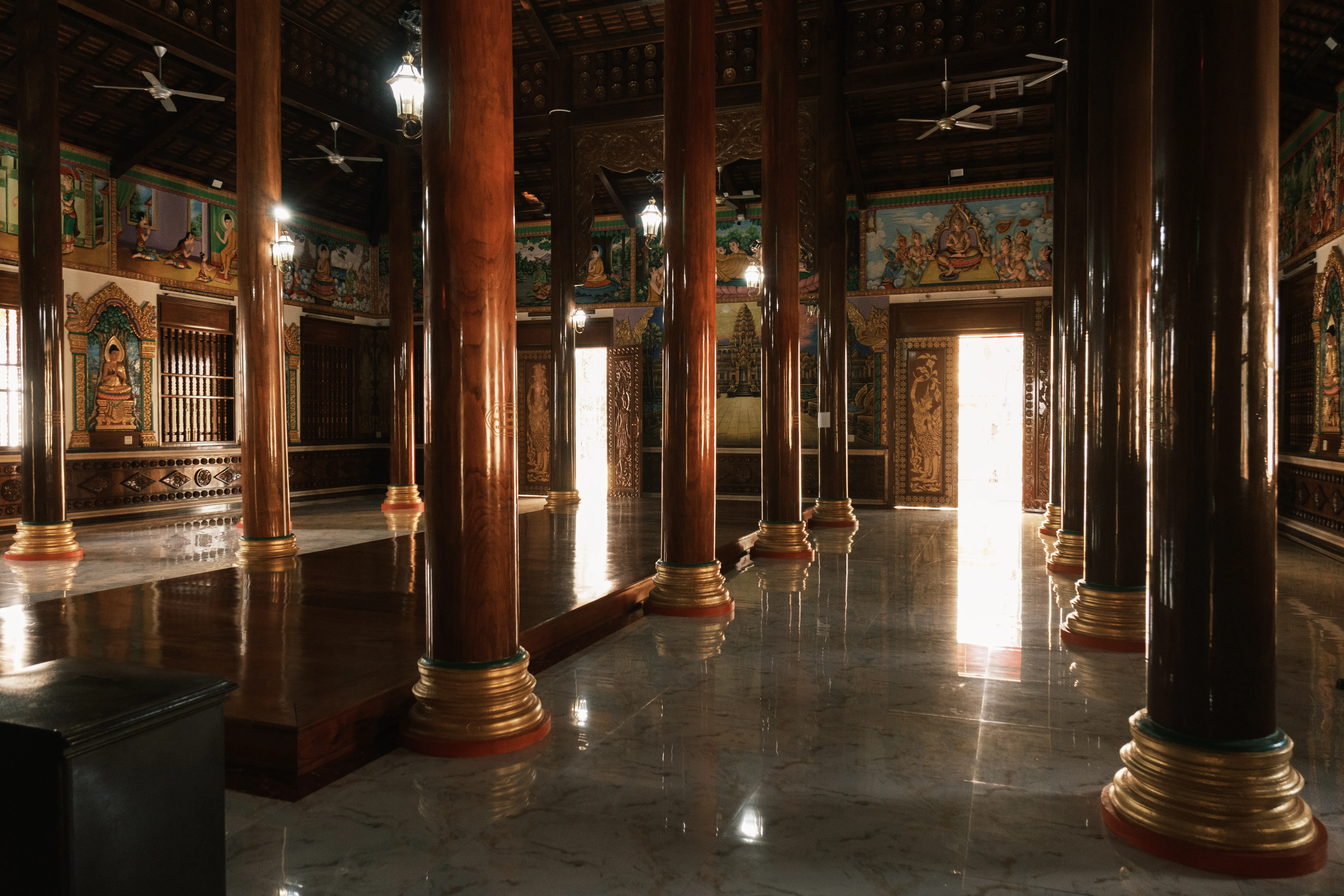
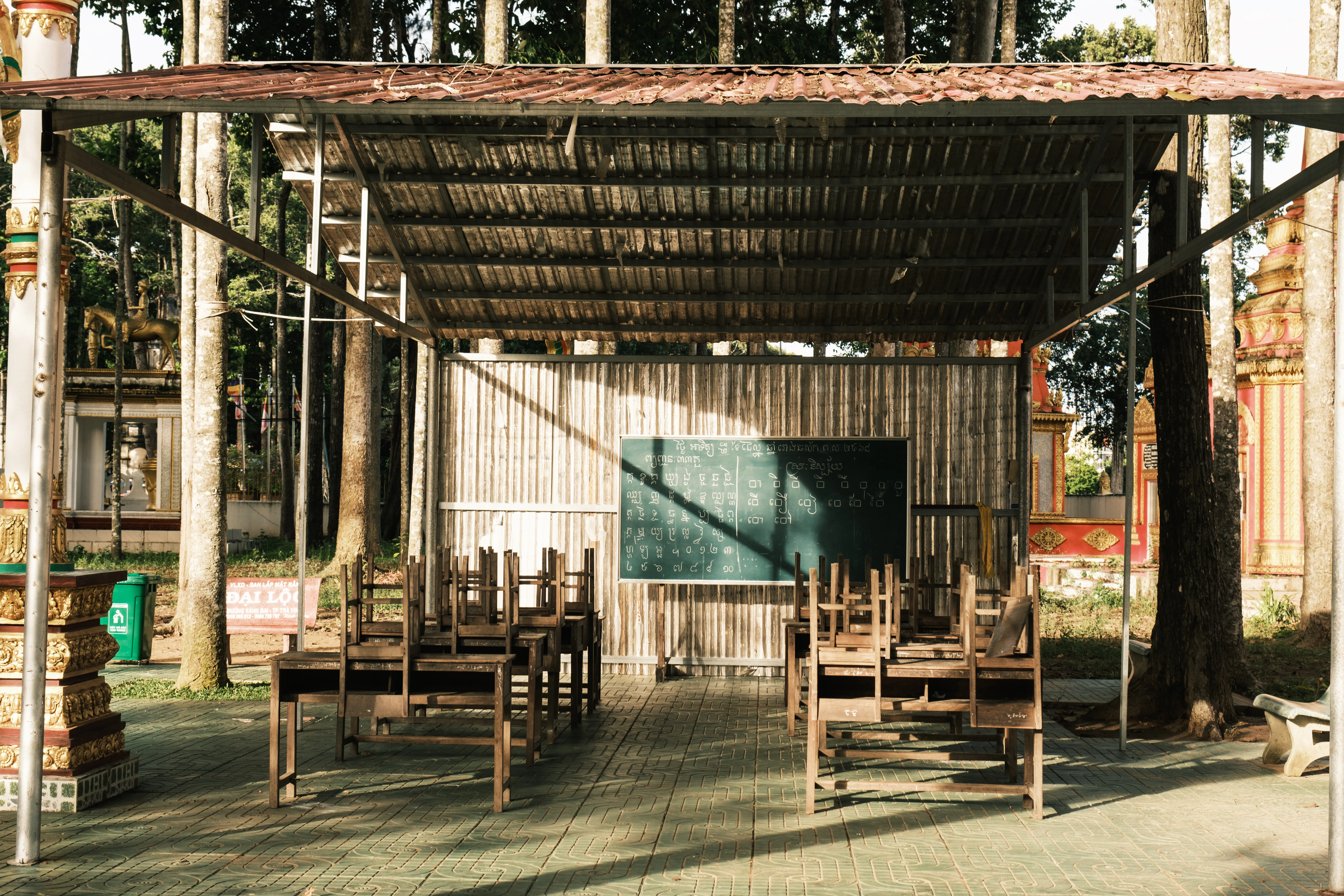
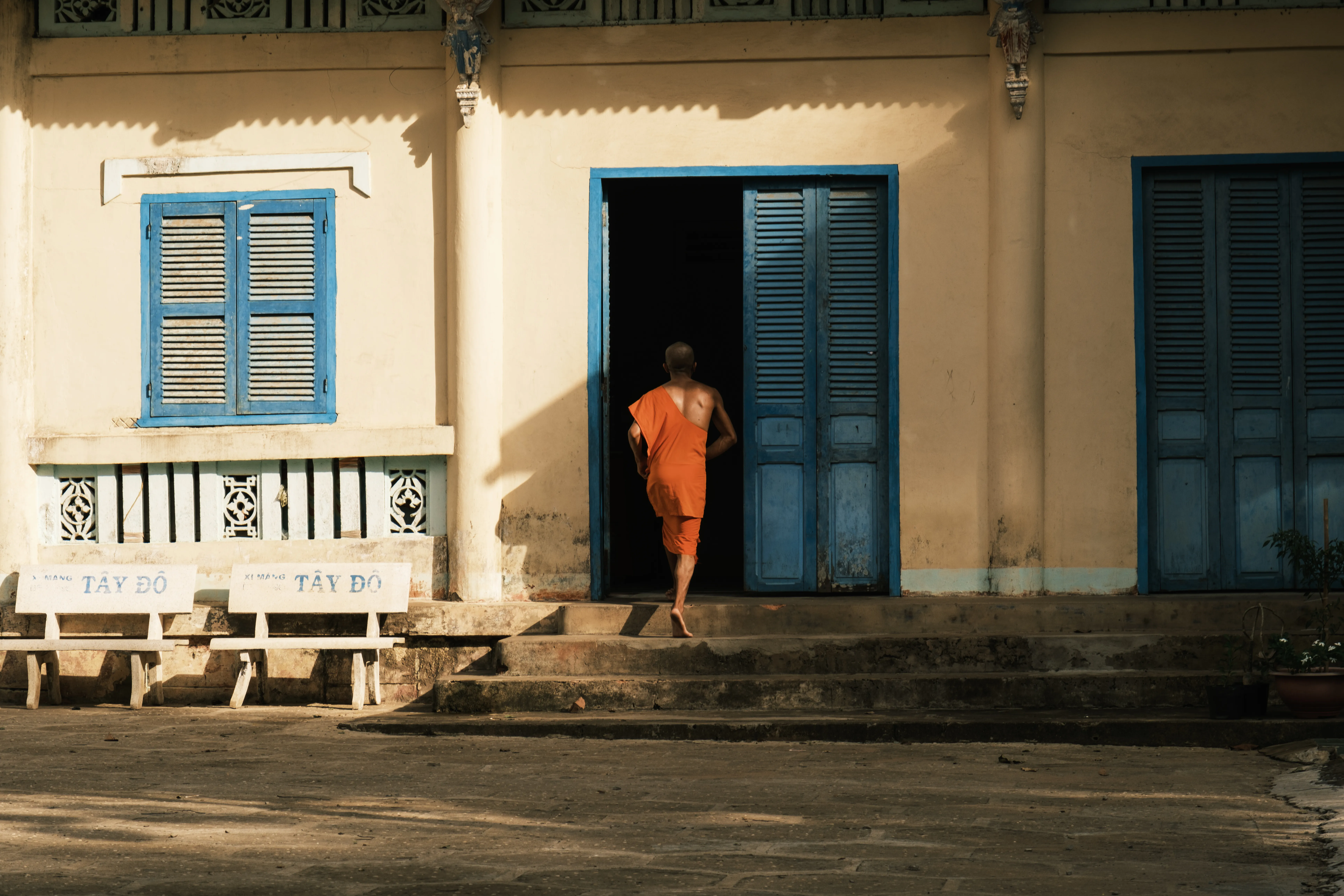
Under the long shadows of the sun, the saffron robes glittered more brilliantly. For a moment, it felt like we had traveled to a peaceful, serene land…
Walking through the pagoda grounds, observing the ongoing activities, we could clearly feel the values this pagoda brings to the community. Not only a spiritual space offering peace and tranquility, Samrong Ek also teaches literacy, helping preserve cultural beauty and connecting Khmer people with their roots.
Like Samrong Ek, many Khmer Buddhist pagodas are quietly contributing to preserving cultural values by offering Khmer and Pali language classes. We believe it would be wonderful if this model continues to be maintained and developed. That way, the fading of such languages will no longer be a concern in a society which is continually integrating new things at the cost of their old values and traditions.
—------
CREDIT:
- Photography: Luan Nguyen
- Content: Giang Huynh
- Design: Luan Nguyen




















